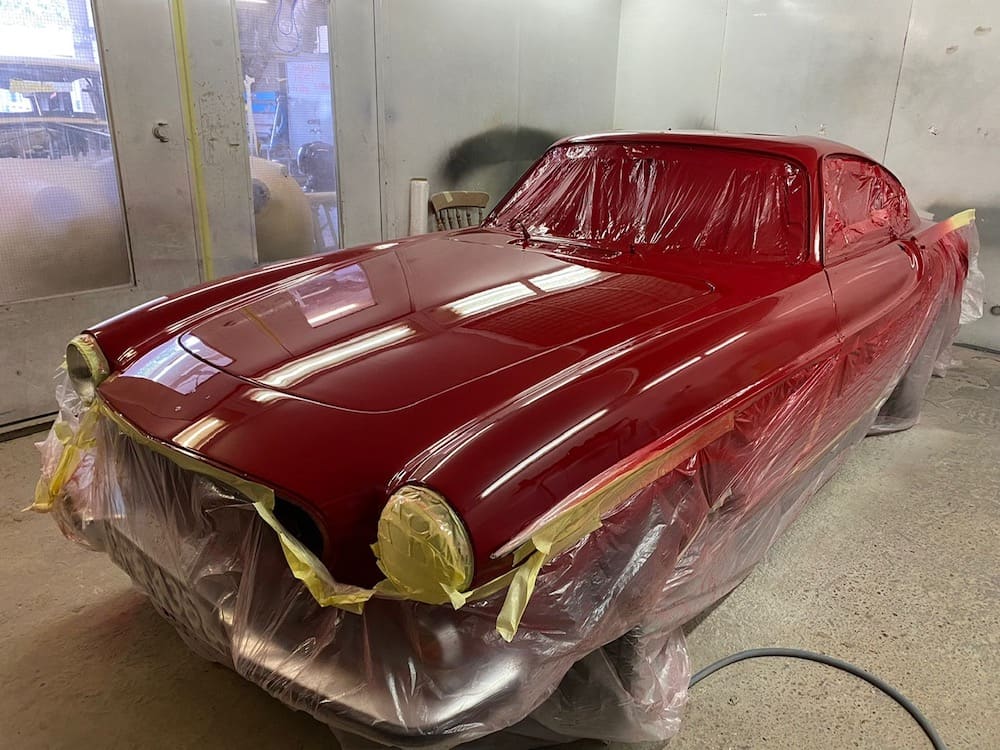
If you’re thinking about having a classic car painted, you probably have some questions. You may worry that repairing a classic car will devalue it or that it won’t last very long. We’re here to help you understand why you might want to respray a classic car and how to get the very best shop for the job in this 7-minute read.
There are many reasons to respray a classic car. If it’s old, it’s likely the paint is damaged in some way - either from the sun, scuffs, collisions or rust. If you’re very lucky and there’s no damage to the original paint, you may just not like the colour and want to change it to something more suited to your tastes. Lastly, you may have bought the car already repainted and the colour they chose wasn’t available on the original. And so you’re looking to restore it to its original glory and paint it in a factory colour. Once you’ve started thinking about respraying a classic car, you’re probably worrying if repainting a classic car will devalue it.
Not usually. If the car is in good condition otherwise, repainting it with a factory colour can increase the value. According to Badell’s Collision, “Having your car repainted is an investment in many ways. Not only will you treat yourself to a vehicle with a like-new finish, [but you will also] add to its residual or resale value. By investing in repainting, you can get a higher trade-in value for an older vehicle. You can also raise your asking price when selling a used car directly to a buyer. But, for cars more than 10 years old, you should consider if the improved trade-in value will outweigh the price of repainting the car. A functional older vehicle can be transformed with a coat of fresh paint. Just make sure that it will be a valuable investment. If the car isn’t in good condition otherwise, repainting it may turn out to be more expensive than the car is worth on resale.” It might be worth getting a valuation on a before and after - just to be sure you’re making a worthwhile investment.
The common types of resprays are bare metal resprays, full resprays, partial resprays and the repair and refinishing of panels. We’ll go over each in more detail:
With a bare metal respray, the car is stripped (often inside too) and any damaged metal is repaired. Then it is painted and everything is put back together. The bare metal respray is the most comprehensive, accounts for the metal’s condition and ensures a consistent finish.
On a full respray, the existing paint is simply flattened out and any imperfections are repaired before the whole car is repainted. With a full respray, you get a consistent finish, but you won’t be able to check the condition of the metal across the whole body and make repairs to it; like with a bare metal spray.
A partial respray is where the car is prepped for paint only on a part of the car. The paint is flattened, imperfections are repaired and then just that section is painted. This may be if you want the car two-tone or with details. With a partial respray, you’re not checking the metal’s condition and you may find inconsistencies with the painted and original car sections.
Like partial resprays, the repair and refinishing of panels only repaints a small area. This may require bare metal or simply flattening the existing paint. The panel may be removed or painted in situ with the rest of the car taped up. As with partial respray, some inconsistency between the painted colour and the original car may show. Body shops may attempt to blend the painted panel with the surrounding car paint to minimise any colour differences.
The average cost of a classic car respray starts at £5k upwards. The cost is based on the process used and how long it takes to complete the respray. Your shop should give you an estimate before commencing work. Be sure to ask what guarantees they have in place and how long the paint job is expected to last for the service that you chose.
Choose a good respray shop first based on their knowledge of the different processes and materials that can be used to repaint your classic car. Look at their reviews and ask if they have any examples of repaint jobs they have done on other classic cars. Always get a quote from a few respray shops and don’t just go with the cheapest. Choose the shop with the best pedigree for your classic car.
The time a respray will last depends on your budget and the painting methods used. The lowest duration paint job lasts 3 years and the longest a paint job will last is 25 years. Remember, there is no make or model specific knowledge that is useful here. It’s what process you choose, the shop’s knowledge of how to treat the metal, what paints and primers they use and how they finish it that determines how long your respray will last.
Hopefully, this guide all about having a classic car painted will help you decide if a respray is right for your classic car. From the cost to the impact on its value, there is a lot to consider. If you want to have a chat about your classic car and repainting goals, reach out to our helpful team here. We’ll run you through the options and give you an idea about the cost and time involved with your classic car repainting job. And if you’d like to browse our portfolio of completed work first, you can view that here.